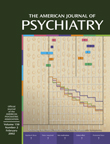Clozapine-Induced Stuttering and Seizures
Mr. A, a 28-year-old man who had been diagnosed with paranoid schizophrenia of 8 years’ duration, was treated with clozapine because treatment resistance. An EEG performed when he was receiving 150 mg/day of clozapine showed bilateral frontotemporal slowing (left more than right), generalized nonparoxysmal sharp and slow waves, and a photic convulsive response. Because Mr. A was having a good response to clozapine, it was decided to continue giving him clozapine under close supervision. However, at a clozapine dose of 300 mg/day, he developed stuttering, which worsened with further increases.At that point, we were unaware of any association between clozapine and stuttering. It was only when Mr. A developed severe stuttering and subsequently had a generalized tonic-clonic seizure when he was taking 425 mg/day of clozapine that we considered that the stuttering might be related to clozapine-induced seizures. We then performed a literature search on PubMed using the key words “clozapine” and “stuttering,” which yielded three related reports (1–3). Our observation of clozapine-induced stuttering was supported by the dramatic improvement in Mr. A’s stuttering after his clozapine dose was reduced to 200 mg/day. Concurrently, we started treatment with valproate and titrated the dose up to 800 mg/day.An EEG taken a day after Mr. A’s generalized seizure showed generalized nonparoxysmal slowing and a photic convulsive response in posterior regions of the brain. The association between stuttering and seizures was further bolstered by the fact that Mr. A did not have a reemergence of stuttering when his dose of clozapine was again increased to 300 mg/day (the dose at which stuttering had initially appeared) while he was also taking valproate. A normal EEG corroborated this evidence.
References
Information & Authors
Information
Published In
History
Authors
Metrics & Citations
Metrics
Citations
Export Citations
If you have the appropriate software installed, you can download article citation data to the citation manager of your choice. Simply select your manager software from the list below and click Download.
For more information or tips please see 'Downloading to a citation manager' in the Help menu.
View Options
View options
PDF/EPUB
View PDF/EPUBGet Access
Login options
Already a subscriber? Access your subscription through your login credentials or your institution for full access to this article.
Personal login Institutional Login Open Athens loginNot a subscriber?
PsychiatryOnline subscription options offer access to the DSM-5-TR® library, books, journals, CME, and patient resources. This all-in-one virtual library provides psychiatrists and mental health professionals with key resources for diagnosis, treatment, research, and professional development.
Need more help? PsychiatryOnline Customer Service may be reached by emailing [email protected] or by calling 800-368-5777 (in the U.S.) or 703-907-7322 (outside the U.S.).

